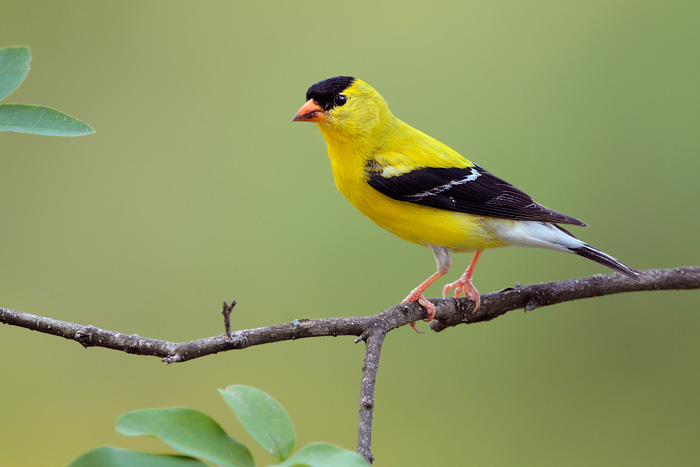One of the most vibrant and striking birds seen throughout most of North America is the American Goldfinch (Spinus tristis), with its vivid yellow body and black-and-white wings. Although they are observable all year round, male goldfinches are especially apparent in the summer when they are wearing their gorgeous bright yellow breeding plumage. In this article we talk about The Breeding Season of the American Goldfinch.
When Breeding Season Occurs
When it comes to other songbirds, the American Goldfinch’s nesting season is rather late. Although most songbirds in temperate North America start reproducing in March or May, goldfinches usually don’t start until late June or early July. The reason why goldfinches breed later in the summer is due to multiple factors:
Goldfinches are mostly seed-eating birds, feeding on mature stands of grasses and composite flowers that produce their seeds later in the summer. Goldfinches ensure that there will be sufficient food sources for their offspring after they hatch by delaying reproducing.
- Preventing severe weather – By building their nests later in the summer, goldfinches are able to shield their young from potentially fatal conditions such as heavy rain, frigid temperatures, and late-spring snowstorms. They build their nests during the hottest and driest period of the summer.
- Plenty of nest materials – Due to delayed breeding, goldfinches are able to make their nests after trees have produced a large amount of new growth, which provides a plethora of plant down, leaves, bark fibres, and spider webs.
Nesting Patterns
In keeping with their summertime breeding approach, goldfinches exhibit a few unusual nesting behaviours:
Nest Positioning
Nests built by goldfinches are intricately woven, cup-shaped constructions that are placed three to fifteen feet above ground, tucked between the forks of small tree and shrub branches. The best places for nests enable the nest to be securely fixed, offer shade, and shield the occupants from inclement weather and predators.
Nest Building
Pairs of goldfinch will take six to eight days to build their nests, skillfully weaving plant down, bark, leaves, and spider silk together with their narrow beaks. The male protects and follows the female while she gathers materials, and she builds the nest.
Laying of Eggs and Incubation
The female will lay a clutch of three to four pale blue eggs after the nest is finished, which she will incubate for twelve to fourteen days. The man gives her food throughout this period. He chases away other birds that could approach the nest in order to protect it.
Bringing Up Nestlings
Chicks of the goldfinch are altricial, blind when they hatch, and largely featherless. Working tirelessly, both parents forage for up to ten hours a day in order to feed the chicks regurgitated seeds. Chicks will fledge and leave the nest after roughly two weeks. But for several weeks while they learn to forage on their own, young goldfinches remain under their parents’ care and are fed.
Ideal Habitat for Goldfinch Breeding
Since goldfinches only eat seeds, wide spaces that sustain stands of plants that produce seeds make up the perfect habitat for goldfinch reproduction. Important characteristics of the habitat include:
The presence of trees and shrubs that produce seeds, alders, birches, dandelion, and late summer composites like coneflower and blazing star all contribute to the availability of vital food.
– The availability of materials and nesting locations: In open spaces, trees and bushes with horizontal branches provide good nest sites. The best conditions for spider webs to stick to when building a nest are dry, open spaces.
– Water sources: Goldfinches can drink and wash frequently in nearby streams, ponds, or bird baths. This is crucial for egg production and for keeping nestlings cool.
Urban parks and gardens: Goldfinches can adjust to suburban areas and tiny urban parks that closely resemble the conditions of their native environment. Bird feeders in the backyard might offer extra food.
Those who observe the goldfinch’s distinct mating habits and ecological requirements might draw this burst of June colour into their gardens. One of the little pleasures of summer is watching and hearing goldfinches brightening up a garden or park with their breezy songs and vibrant plumage. Anyone can welcome these unique songbirds to nest and raise their young nearby with a little preparation. I sincerely hope you find this “The Breeding Season of the American Goldfinch” article helpful.

